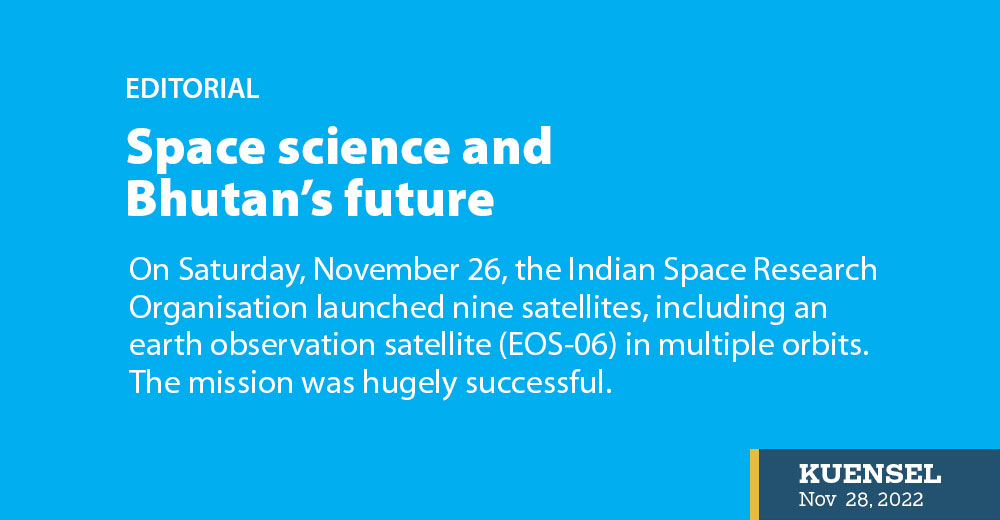On Saturday, November 26, the Indian Space Research Organisation launched nine satellites, including an earth observation satellite (EOS-06) in multiple orbits. The mission was hugely successful.
For Bhutan, the achievement carried a special significance because the collaboration between the two friendly nations sent ISRO Nano Satellite-2 into the space.
ISRO Nano Satellite-2 spacecraft is configured with INS-2 Bus. It will have two payloads, namely NanoMx and APRS-Digipeater. NanoMx is a multispectral optical imaging payload developed by Space Applications Centre (SAC). APRS-Digipeater payload is jointly developed by Bhutan’s DITT and URSC.
Why is it a special moment for Bhutan?
Earth observation satellite’s data is mostly used in archaeology, cartography, environmental monitoring, meteorology and reconnaissance applications, among others. At a time when mountain countries are impelled to fight the effects of climate change even though mountain countries contribute the least to the devastating effects due to changes in the earth’s climate, space exploration such as Satellite-2 could play a vital role in planning advanced response systems.
Also, as Indian media reported, the India-Bhutan satellite is a very important milestone in the history of joint collaboration between Indian and Bhutanese scientists.
Satellites are launched into space and into their orbit by hitching a ride on a rocket or on the space shuttle, where they are placed inside the cargo bay. After the rocket is launched, a rocket control mechanism utilises the inertial guidance system to make important calculations to adjust the nozzle of the rocket, which allows the rocket to tilt itself in the direction specified by its flight plan.
This is a difficult science.
Space exploration and investigation give us information to increase our knowledge of the cosmos for the benefit of humanity. The recent missions to space have been guided principally by the increasing need for national prestige and bolstering national security.
For Bhutan, it is a giant stride in ways more than one. At a time when the country is giving a special focus to STEM education, a milestone like this gives us a vital push. Such successful space endeavours should encourage our children to look beyond mere professional and civil service jobs.
The future of the world will be dictated by how savvy a country is with technologies and innovations. That’s why Nano Satellite-2 is a new beginning that should guide Bhutan’s education system and the country’s overall outlook.
As a small Himalayan country, education and innovation could be our best export in the next century.


